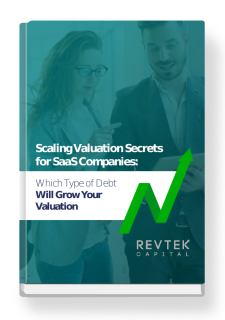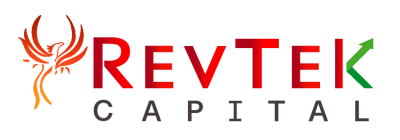With the influx of the Software as a Service (SaaS) business model over the past several years, many new pricing strategies and models have been implemented. There are a wide variety of viable options to choose from depending on your target market and price points. In this post, we will explore a few of the most common SaaS pricing models and SaaS pricing strategies.
SaaS Pricing Strategies
Before deciding which specific model to choose, a successful SaaS company will carefully plan their long-term pricing strategy. Without a legitimate strategy to inform pricing options, the whole plan and company can easily go awry. These are a few of the most common pricing strategies that SaaS companies should implement.
Penetration
With this approach, the whole goal is to gain as much of the market as possible right off the bat. To do that, a company must price their products lower than their competitors to encourage customers entering the field, as well as those who are already established with competitors.
While offering SaaS products at a price with minimal profit may seem like leaving money on the table, this approach allows a company to quickly enter the market. Once they have proved their worth to their customers, they can begin gradually raising their prices.
Skimming
This method serves as the exact opposite of the penetration approach. Instead of starting low and gradually raising the price, this method involves starting high and gradually dropping it.
This is a smart way for companies with a unique SaaS product to enter, as the early adopters will be willing to pay more. As the product loses its grandeur and competitors try to penetrate the field, dropping the price allows you to maintain your customers and reach new markets.
Cost Plus
In this strategy, the whole goal is to ensure profits from the very beginning. The price is based on the cost per unit combined with a designated amount of money that the company hopes to make per unit.
This method is simplistic in that the price is always based on the cost. While this does ensure that you make a profit, startups using this approach will probably have difficulty penetrating the market.
Value-based
Instead of focusing on your own costs in providing the solution, this strategy focuses on the value from the customer’s perspective. Of course, this value is subjective and can vary depending on the user. This means that you need to understand exactly how your users will use your product and what benefits it will provide them.
Successfully using this approach requires significant understanding of your customers and how they feel about your product and price points. When done correctly, you can gain significantly more profit per customer than with many of these other strategies.
This discussion of strategies is especially important in the determination of SaaS pricing strategies. Many startups begin without any clear competition or a completely new SaaS solution, which makes it very difficult to know what the prices should be. As Lincoln Murphy so aptly puts it, “no one knows what the best price for your SaaS offering should be.”
By working through some strategies, however, you will be able to generate a better idea of what your pricing approach should be. Once you determine your strategy, you can make better, more informed decisions about your actual model.
Pricing Models
Done are the days of simple flat rate pricings. For SaaS startups and companies, a flat-rate pricing system severely limits their income potential, as their high usage customers will receive significantly more value. Usage-based models have been used by a few companies, but the inconsistency in income for you and the prices for customers causes most people to avoid this model.
This has led to a lot of creativity in developing models that make sense for the customers and provide legitimate income for the companies. Here are a few of the most common models.
Tiered Pricing
One of the most common pricing models is tiered pricing, which offers different plans for different personas. Oftentimes, this will range from free users, who have very limited functionality, all the way to large enterprises and businesses. Most companies who use this pricing model have pricing pages with three or four different options.
Price tiering allows you to effectively market your product to multiple personas, greatly expanding your pool of potential customers. By not overcharging or undercharging any of your customers, you maximize each customer’s value and provide them with the tools they deserve. This model goes extremely well with the value-based and cost plus strategies.
Price Per User
This is another common model for SaaS companies. In this setup, the company designates a price per user, and that price stays the same regardless of how many individuals are on a given plan. This arrangement is extremely simple, allowing the customer to easily calculate the consistent costs and the provider to earn the same consistent income.
While the simplicity is appealing, this model is not ideal for large enterprises. Ryan Law of Cobloom says it this way: “by charging per user, you provide a reason to avoid adding new users to the tool. This also provides an incentive to cheat, and wherever possible, share a single login between multiple team members.”
Per Active User
A variation of the price per user model, this approach allows the customer to pay based on how many people actually use their product. In some ways, this is similar to the usage based approach, except that the variation occurs with the number of people not the quantity or types of use.
This model encourages enterprises to sign up as many of their members as possible, knowing that they will only be required to pay for those who end up using it. Paying based on the number of users maximizes value for the customer and ensures that you don’t overcharge or undercharge.
It is important to point out that these are not the only models. Other common models include per feature pricing and premium pricing. Another important thing to mention is that these approaches are not mutually exclusive. Additionally, elements such as free trials can be tacked onto any of these pricing models, particularly if you are working within the penetration strategy.
How Does RevTek Help SaaS Companies?
Regardless of which of these SaaS pricing strategies or models you have or choose, your company will need an injection of external capital at some point. With their reliance on relatively small monthly payments and a lack of upfront payments, SaaS companies in particular need outside investments. That’s where we come in.
We specialize in providing capital to SaaS companies just like yours. Our process is simple. We provide you with the growth capital that you need to expand your operations and increase the value of your SaaS business in exchange for manageable monthly payments based on your monthly, recurring revenue.
Unlike others, we do not take any equity, a seat on your board, and our terms are simple. To be eligible, you do not have to be profitable, but you should have a predictable recurring revenue of at least $500,000 a month. If you are a SaaS company, learn more about how we can partner with you.



